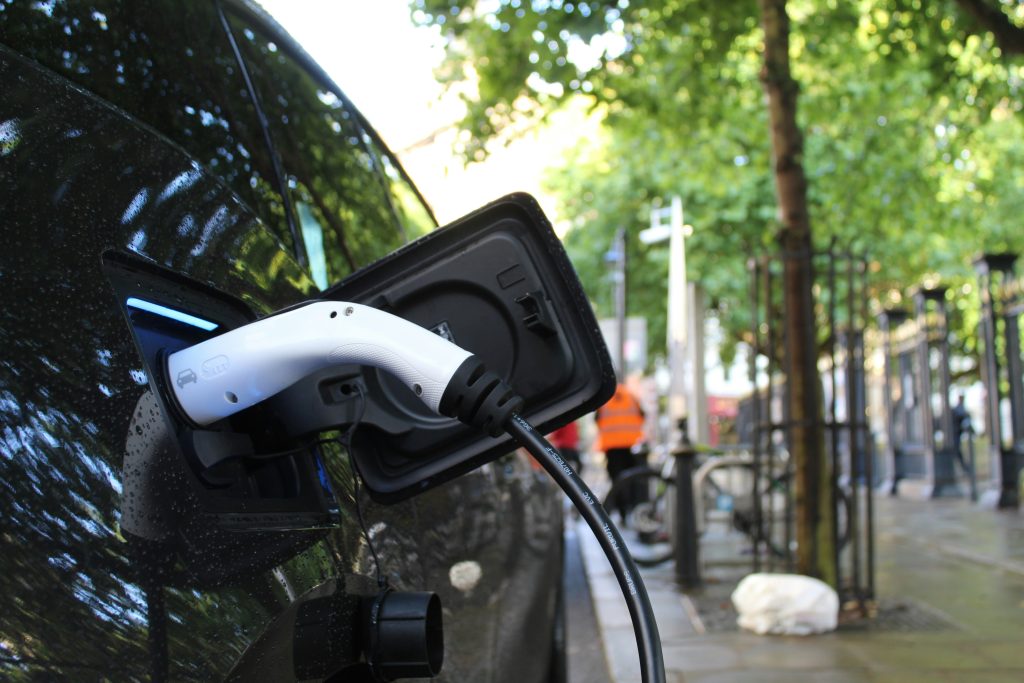More Charging Stations Needed to Cut Fossil Fuels in Transportation

By: Jane Marsh
People working in green infrastructure know transportation electrification is the most prominent barrier to reducing fossil fuel use. Expansion requires a delicate balance of federal investments, private dedication and public electric vehicle (EV) buy-in for commuter and fleet vehicles.
However, it requires accessible charging stations to eliminate range anxiety, convincing people EVs are worth investing in. What is the current state of chargers, and how close is the U.S. to having enough to drive fossil fuel obsoletion?
Investing in Expansion
The Inflation Reduction Act catapulted numerous green initiatives into the mainstream, making them viable and required. It provided tax incentives for EV purchases meeting specific requirements, but it supported American-made products for prices befitting the economy of the time — such as recovering from COVID-19. Pair this with gas-powered car bans, and you will have a powerful combination to defunct conventional vehicles.
The Alternative Fuel Infrastructure Tax Credit provides up to a 30% tax credit for qualifying sustainable fueling equipment until 2032, placing some urgency on consumers. Establishing chargers in homes alleviates national burdens while giving EV owners complete agency on how and where to fuel their cars.
Expansion also requires commercial outfits to feel encouraged to transform fleets. The National Zero-Emission Freight Corridor Strategy may allow for more widespread high-level chargers. After several years of establishing charging hubs, it will transform the nation’s fleets to zero emissions by 2040.
The expansion will begin where diesel’s impacts are felt most harshly, such as in low-income regions and areas where public health crises from its pollutants are most prominent. This unprecedented collaboration among the U.S. Department of Education, Department of Transportation and Environmental Protection Agency sets the tone for cross-sector projects for a tight-knit, electrified future.
Overcoming Hurdles
Infrastructure investments and legislation are the most crucial aspects for certifiable change, but they are vulnerable to several obstacles, including 4-8 hour charging speeds for Level 2 chargers, compatibility and costs. Fortunately, eliminating fossil fuels is still possible because of existing solutions.
Charging Speeds
Charging speeds are arguably an issue because few people will purchase an EV requiring a full day to charge, much less a heavy-duty vehicle. Investing in novel battery technologies that support faster fueling, higher density, and more significant capacities will transform EVs.
In addition to lithium-ion, solid-state and sodium-ion batteries are top contenders for diversifying the market while answering range and charging concerns. A solid-state unit’s 10-15-minute charge time is more palatable than the 40-minute window of a lithium-ion battery.
Compatibility
Compatibility covers several regions, starting with the power grid to support on-grid charger reliability. Off-grid options integrated with renewable energy — such as solar canopies — are becoming increasingly common.
Too much pressure on the grid could result in electrical brownouts or blackouts, causing reduced performance and operation of EV chargers. A poor reputation for EV charger efficiency will only lengthen fossil fuels’ relevance, dissolving interest in remedying compatibility concerns.
Other compatibility issues arise because there is no standard for car makers to require EV adapters from different nations. For example, North America employs CCS1 connectors, while China uses GB/T. Installing on-site adapters or standardizing this for universal applicability is vital for quelling drivers’ fears.
Cost
Fleets experience this hurdle most notably. Level 3 chargers for heavy-duty trucks and equipment may cost up to $40,000 per station before considering installation. Efforts like the Bipartisan Infrastructure Law expand domestic production to saturate the market with more charging products, hopefully lowering prices. This includes related prices, such as permitting and costs for connecting chargers to utility providers.
In the meantime, corporations must participate in impact investing while legislative action handles most of the pricing issues. For EV expansion to become fully realized, fueling an EV must be more cost-competitive than gas-powered cars and cheaper to purchase chargers. It is the only way to get these vehicles off the market without making buyers feel stressed or restricted.
Verifying Chargers Work
Where is proof that these projects and dollars lead to eliminating society’s reliance on fossil fuels? The facts are complicated and vary from state to state. West Virginia is coal-powered, meaning EV chargers are, too. Fueling an EV there produces 6,228 pounds of carbon dioxide annually versus the 705 pounds in Washington state. Eliminating fossil fuels requires a simultaneous adoption of clean energy to waive them.
It leads many to question what is next for the industry. Most of these answers lie within startups and behind governmental doors. Investing and believing in research is critical for discovering the most important answers leading to a justifiable EV-driven society.
Decarbonizing Transportation
EVs are the future of green transport, but chargers are the way to eliminate fossil fuels. Without increasing access, speeds and affordability, commuters and businesses will continue to drive internal combustion engines despite their impacts on the warming planet.
Modern projects signal progress, but more is necessary. Corporations and consumers must advocate for even more robust policymaking and collaborative action to meet the planet’s climate initiative deadlines.
_____________________________________
Jane Marsh, Editor-in-Chief at Environment.com
Email jane@environment.co
Website https://environment.co/



